Marah gilensis, Wild Cucumber
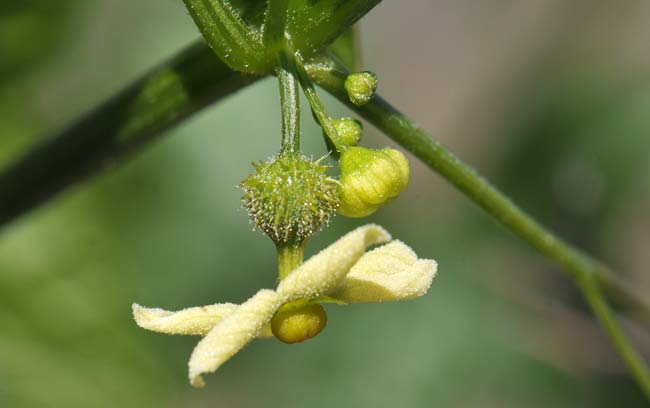
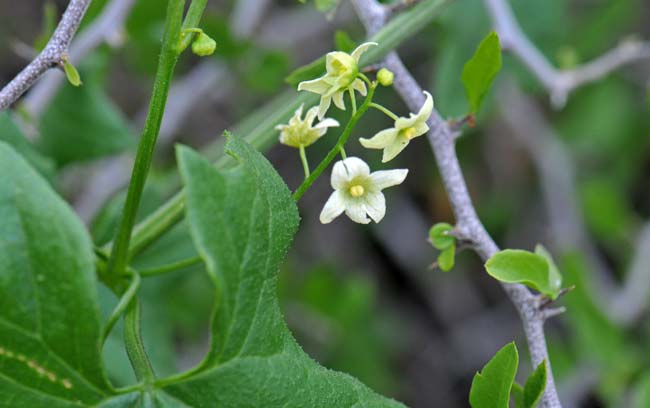
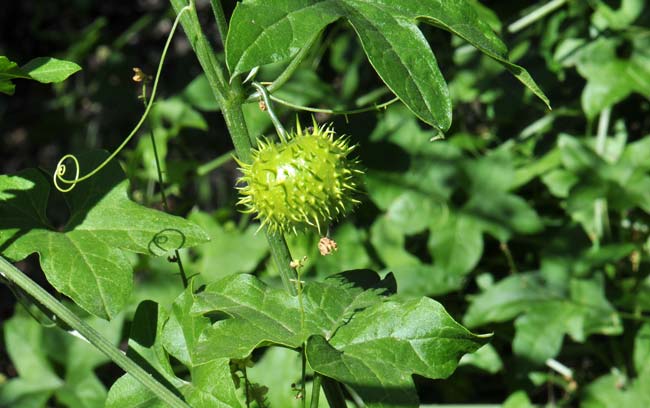
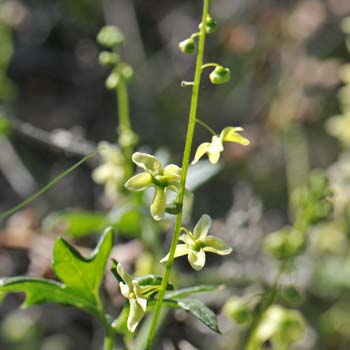
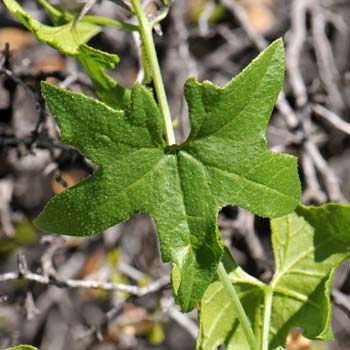
Scientific Name: Marah gilensis
Common Name: Wild Cucumber
Also Called: Bigroot, Gila Manroot, Greene Gila Manroot, Manroot, Wild Cucumber
Family: Cucurbitaceae, Cucumber or Gourd Family
Synonyms: ()
Status: Native.
Duration: Perennial
Size: Up to 6 feet or more, uses woody plants to reach full height.
Growth Form: Forb/herb; vine; coiling tendrils, trailing, climbing, tuber-like roots, sends up fleshy succulent-like green shoots in early spring.
Leaves: Shiny green; palmately lobed, often 5 lobed, lobes triangular or oblong-lanceolate, leaves may be variable on same plant.
Flower Color: White; dull white or green; monecious with male and female on same plant, large bright green dramatic looking fruits are fleshy with stout smooth spines.
Flowering Season: February to April.
Elevation: Up to 5,000 feet.
Habitat Preferences: Sandy washes and streams within woody thickets.
Recorded Range: Marah gilensis is rare in the United States where it is found only in Arizona and it is listed as occurring in New Mexico. In Arizona it is found in the central, southern and northwestern parts of the state.
North America & US County Distribution Map for Marah gilensis.
U.S. Weed Information: No information available.
Invasive/Noxious Weed Information: No information available.
Wetland Indicator: No information available.
Threatened/Endangered Information: No information available.
Comments: Wild Cucumber is a specialized desert cucumber surviving harsh arid conditions with strategies that include a large tuberous root. It quickly sends up succulent fleshy-like stems which are frost sensitive. Early spring freezes will result in loss of new growth and new shoots by emerge two or more times per season.

